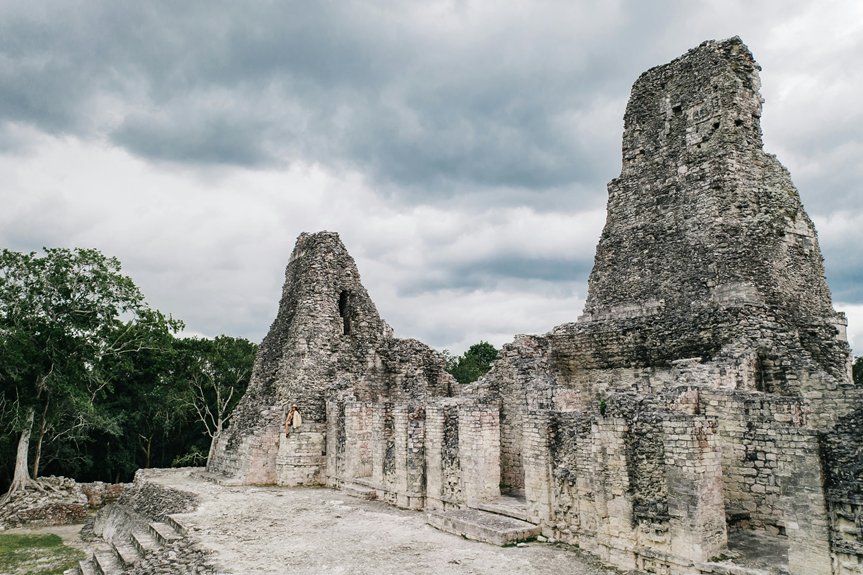Imagine standing in the heart of Tenochtitlan, witnessing the grandeur of the Aztec Empire under Montezuma II’s rule. His leadership united diverse city-states and left a lasting cultural legacy. Yet, his encounter with Hernán Cortés marked a turning point that changed everything. What drove Montezuma’s decisions in these critical moments? Understanding his story reveals much about the complexities of power and identity in Mexico today.
The Rise of Montezuma II: Early Life and Ascension to Power
Although Montezuma II is often remembered as the last emperor of the Aztec Empire, his early life and rise to power reveal much about his character and leadership. Born into a noble family, he received an education that prepared him for leadership.
You’d find that his training in military tactics and religion shaped his worldview. Montezuma ascended to power around 1502, after the death of his uncle, and quickly proved himself as a capable ruler.
His ability to unite various city-states under his rule demonstrated his strategic mindset. You’d notice how he emphasized the importance of tribute and trade, strengthening the empire’s wealth.
Ultimately, his early experiences laid the groundwork for his future challenges and decisions as emperor.
The Aztec Empire at Its Height: Culture, Society, and Achievements
Under Montezuma II’s rule, the Aztec Empire flourished, showcasing a vibrant culture, a complex society, and remarkable achievements.
You’d marvel at the stunning architecture, like the Templo Mayor, a grand pyramid dedicated to their gods. The arts thrived, with intricate pottery, textiles, and vibrant murals that told stories of their rich history.
Society was organized into classes, from nobles to commoners, each playing essential roles. You’d experience a bustling marketplace, filled with traders exchanging goods like cacao, gold, and textiles.
Religion permeated daily life, with rituals honoring deities and ensuring harmony. The Aztecs also excelled in agriculture, developing chinampas, or floating gardens, which boosted food production.
Truly, the empire stood as a testament to innovation and cultural depth.
The Spanish Conquest: Montezuma’s Encounter With Hernán Cortés
In 1519, the Aztec Empire faced a turning point with the arrival of Hernán Cortés, a Spanish conquistador whose ambitions would reshape the course of history.
As Montezuma, the emperor, learned of the newcomers, he felt a mix of curiosity and trepidation. You might see him grappling with the idea that these foreign invaders could be gods or harbingers of doom.
When they finally met, Montezuma welcomed Cortés, believing it would strengthen his empire. However, this decision proved disastrous.
Cortés, driven by greed and ambition, manipulated Montezuma’s hospitality to gain control. As you explore this pivotal encounter, consider how Montezuma’s initial trust laid the groundwork for the challenges that would follow, forever altering the fate of the Aztec civilization.
The Fall of Tenochtitlan: The Downfall of the Aztec Empire
The fall of Tenochtitlan in 1521 marked a devastating end to the Aztec Empire, a culmination of battles, betrayal, and strategic miscalculations.
You witness the relentless siege led by Hernán Cortés, who capitalized on internal strife among the Aztecs. As you navigate the city’s narrow streets, you see the once-mighty empire crumbling under pressure.
The alliance with rival tribes like the Tlaxcalans significantly weakened the Aztecs’ defenses. You feel the despair as food shortages and disease ravage the population.
Ultimately, with the city’s surrender, you realize that the fall of Tenochtitlan isn’t just a military defeat; it’s a profound shift in power and culture in Mesoamerica, paving the way for Spanish colonization.
Legacy of Montezuma: Myths, Interpretations, and Historical Impact
While many view Montezuma II as a tragic figure whose reign ended with the fall of Tenochtitlan, his legacy is far more complex and multifaceted. You’ll find that historians often debate his role, interpreting him as a brave leader who faced unprecedented challenges.
Some myths paint him as a coward, while others highlight his diplomatic strategies and cultural achievements. His interactions with Spanish conquistadors have led to various interpretations, influencing how we see power dynamics.
Montezuma’s reign marked significant developments in trade, religion, and governance, shaping Aztec civilization. Ultimately, the myths surrounding him reflect broader themes of colonialism and identity, making his legacy a vital part of Mexico’s historical narrative that you can explore further.
Montezuma in Modern Mexico: Symbols of Identity and Cultural Heritage
Montezuma II remains a potent symbol of identity and cultural heritage in modern Mexico, embodying the complex relationship between indigenous history and contemporary national identity.
You’ll find his image in art, literature, and even popular culture, reflecting a deep connection to Mexico’s pre-Hispanic roots. Many view him as a representative of resilience against colonization, inspiring movements for indigenous rights and cultural preservation.
Celebrations, like Día de los Muertos, often honor figures like Montezuma, reminding you of the rich tapestry of history that shapes the nation. His legacy serves as a reminder of the importance of understanding and embracing one’s heritage, encouraging you to explore your roots and acknowledge the diverse influences that contribute to the vibrant Mexican identity today.





